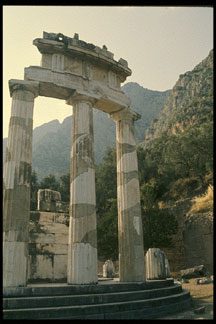Davi Nikent has a name change in process. This website and all pages will soon reflect the change to The Center for Human Flourishing – aka Davi Nikent – Nuche language meaning “Always Light.“
We believe the name The Center for Human Flourishing states more directly the purpose of our organization that offers experiential educational programs aligned with the integral health model as described by Dr. Elliott Dacher in his book “Integral Health: the Path to Human Flourishing.”
The goal of integral health is far-reaching offering through the expansion of consciousness a flourishing of mind, body and spirit that when fully realized leads to an expansive and sustained health, happiness and wholeness for ourselves and for humankind.
Watch for the formal name change of this website in the near future.
The history behind Dävi Nikent’s poetic name remains unchanged as a most meaningful theme, which guides its pragmatic vision. Essentially, the role of Dävi Nikent is to ensure that there is “Always Light.”
When seeking a name that would match the vision for the center we asked Clifford Duncan, a Northern Ute Elder, for a name that would mean “reconnection to spirit.” He gave us the sounds and we spelled it out as Dävi Nikent. Asked for the literal translation the elder told us it meant “Always Light.”
Can one bring more light into a room? Of course. Can one bring more dark into a room? Only by removing light. Light itself has no true opposite; what we call dark is merely the absence of light. The presence of light can be diminished only by blocking it in some way.
This simple thought is quite an accurate analogy of the entirety of human life. As an organization, The Center for Human Flourishing – aka Davi Nikent – Nuche language meaning “Always Light,“ has taken this notion and applied it in a highly systemic manner to the broad human condition.
Asklepian Temple Tradition
 The Temples of Asklepios were centers of healing that were built all over Greece in the years 500 B.C. to 300 A.D. The spirits of Asklepius and his daughters Hygeia and Panacae were said to reside in these temples.
The Temples of Asklepios were centers of healing that were built all over Greece in the years 500 B.C. to 300 A.D. The spirits of Asklepius and his daughters Hygeia and Panacae were said to reside in these temples.
Asklepius, son of Apollo and Coronis, was educated in healing by the Centaur, Chiron. His image, captured in statue form, shows a man of grand stature carrying a staff with a coiled serpent. This staff has become the symbol of the modern medical profession. The modern day caduecues has two snakes around a slim staff.
Temples to Asklepius were often built on plateaus, outside of cities or towns, with views of the mountains and the sea. Built in the architecture of the time buildings were separated by courtyards and gardens. The natural environment was very much part of the healing environment.
People with significant or long standing illnesses were directed to the temple by their local physician or priest. They were often told that nothing more that could be done for them at home and for healing to occur they needed to visit Asklepios. They would journey to one of these temples and on the way would meet people returning home from their time with Asklepius. These people would share their stories of the miracle cures that had occurred. The journeyers would be filled with hope with these stories.
Upon arrival at the temple the person would undergo a period of cleansing and purification. The priest/physican would then prescribe a process of special diet restriction and possibly medicines when necessary. Experiences in the gymnasium provided physical exercise and conditioning. Dialogue with teachers provided an deeper understanding of health and well-being. A time of sleeping in the temple was essential for the healing. In the night Asklepius would often appear to provide information for the regimen the person would undertake to complete the healing. Theater was an essential part of the experience. Watching the tradegies Aeschylus, Euripides, or Sophocles would often put in to perspective the events of the person’s life and alleviate the personal suffering. A slow return of energy and well-being would be experienced and often a complete reversal of disease symptoms would be experienced. Well-being on all levels would be restored. Gratitude to Asklepius would be given in form of offerings and the person would prepare for the journey home fully restored in mind, body and spirit.
The temples faded after the Third Century AD as the Romans and Christians were adamant in expunging the history of the Greek Gods. Temple sites are still apparent at Epidaurus, in the Pelopnennese and at Pergamum and Kos. A journey to one of these sites can provide a person with the “essence” of the healings experienced here.
Dävi Nikent, Center for Human Flourishing, draws on the Asplepian Temple tradition to inform the place, the programs and the attitude of health and well-being to be shared with the community, both local and globally.
